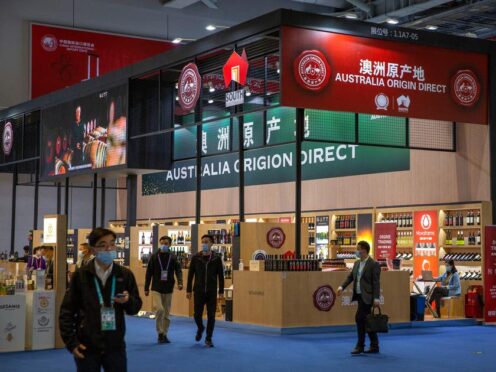
China on Thursday said it will lift tariffs placed on Australian wine more than three years ago, in a sign of improving ties between the two countries.
China’s Ministry of Commerce said the decision will take effect Friday.
China imposed tariffs on Australian wine in 2020 during a diplomatic feud over Australia’s support for a global inquiry into the origins of Covid-19. The duties on Australian wine skyrocketed above 200%.
Australian wine producers took a heavy hit from the tariffs, as China was Australia’s top wine export destination.
The Australian government welcomed the decision, saying in a statement that the tariffs were lifted at a “critical time for the Australian wine industry”.
He Yadong, a spokesperson for China’s ministry of commerce, said China and Australia are “each other’s important trade partners”.
“We are willing to work with Australia to resolve each other’s concerns through dialogue and consultation and jointly promote the stable and healthy development of bilateral economic and trade relations,” Mr He said.
The trade in 2019, before the tariffs were in place, was worth 1.1 billion Australian dollars (£563 million) a year to the local economy.
Australian prime minister Anthony Albanese said the level of trade would likely increase when restrictions were scrapped.
“We reckon that the resumption of trade, which we think is imminent, will see an even higher amount because that’s what we’ve seen with other products that have been resumed,” he said during a visit to a winery located in Australia’s Hunter Valley wine region on Thursday before the lifting of tariffs was announced.
“China wants good high-quality wine and Australia produces it.”
China imposed a raft of sanctions on Australian goods in 2020 during the most recent nadir in the bilateral relationship.
It is estimated that the tariffs cost the Australian economy 20 billion Australian dollars (£10.3 billion).
The trade barriers were widely regarded as punishment for the previous Australian government passing laws that ban covert foreign interference in domestic politics, for barring Chinese-owned telecommunications giant Huawei from rolling out Australia’s 5G network due to security concerns and for calling for an independent investigation of the Covid-19 pandemic.
China was also angered by Australia’s deepening security ties with the United States, notably the Aukus agreement that also includes Britain and will provide Australia with submarines powered by US nuclear technology.
Most of the tariffs have since been lifted as the relationship thawed.

Enjoy the convenience of having The Sunday Post delivered as a digital ePaper straight to your smartphone, tablet or computer.
Subscribe for only £5.49 a month and enjoy all the benefits of the printed paper as a digital replica.
Subscribe